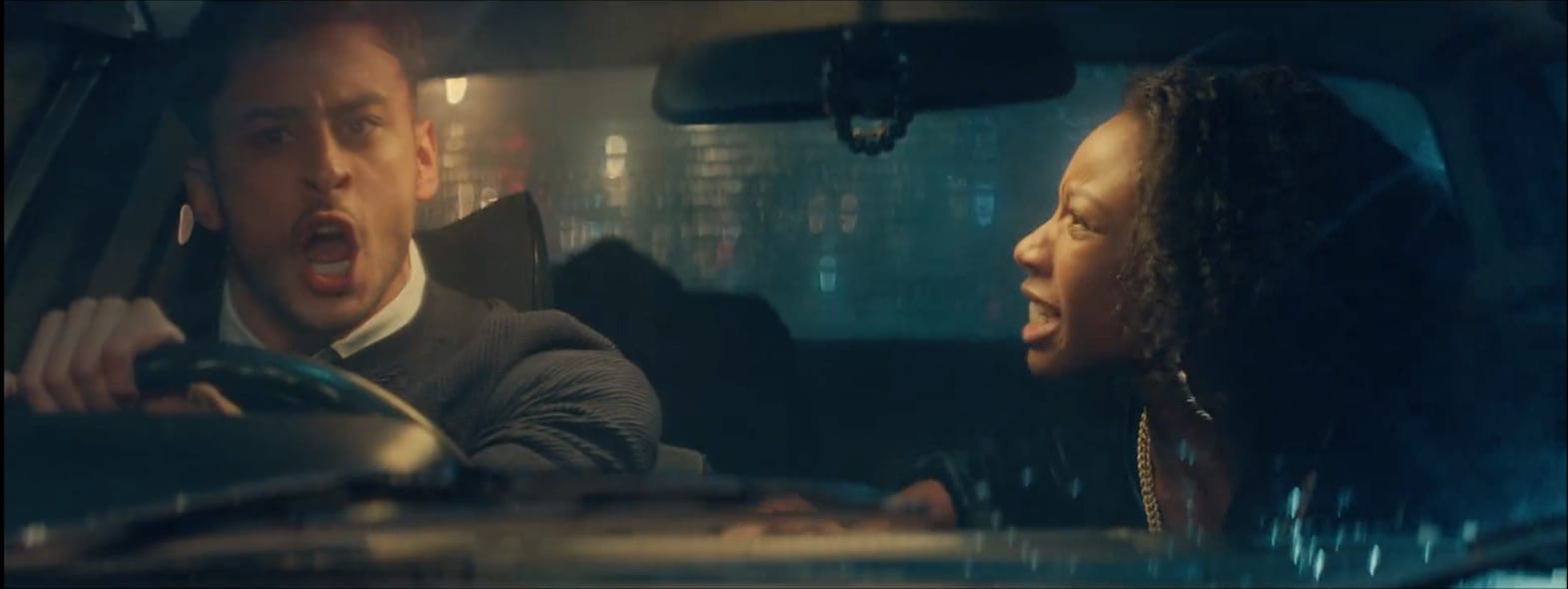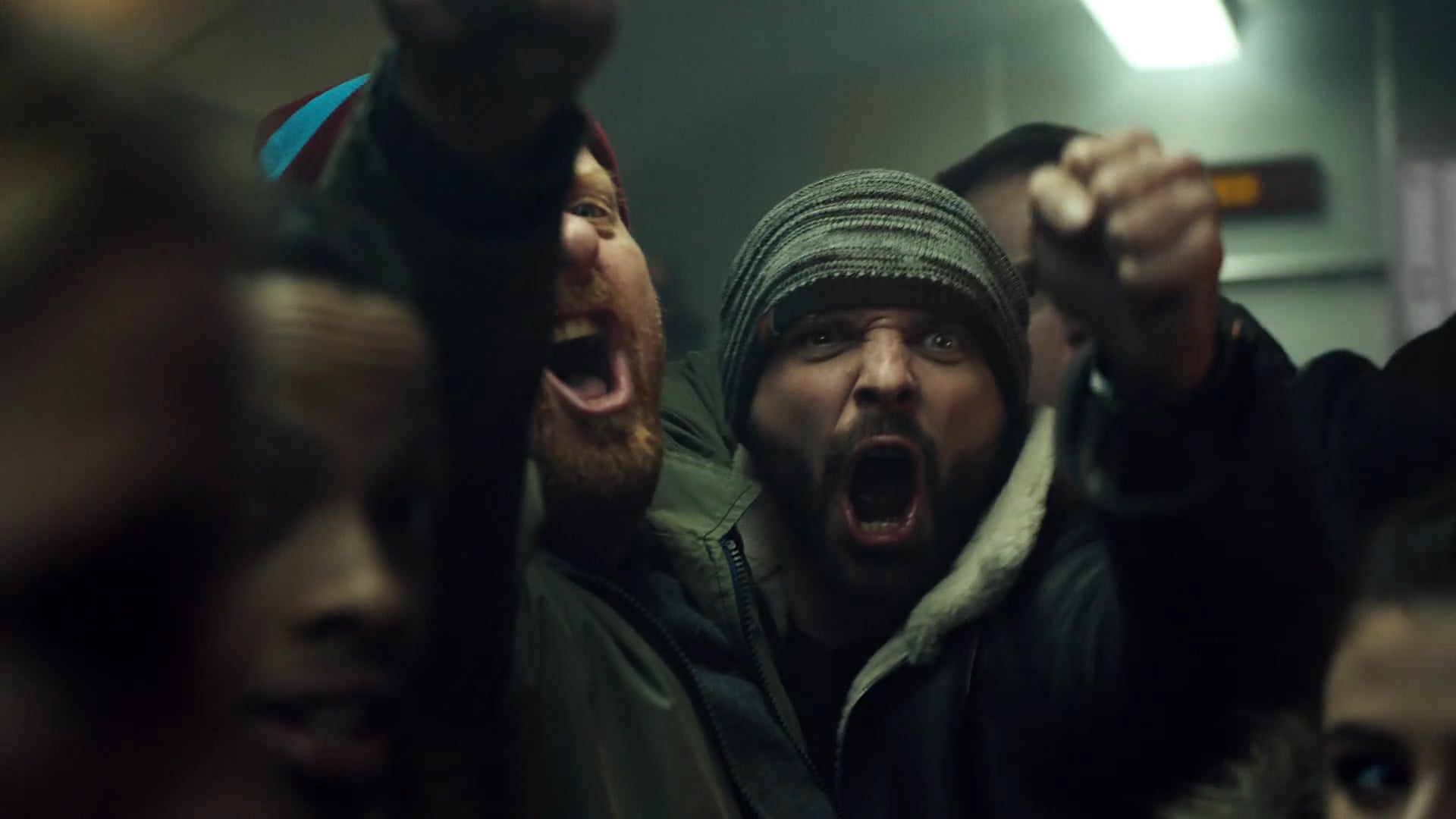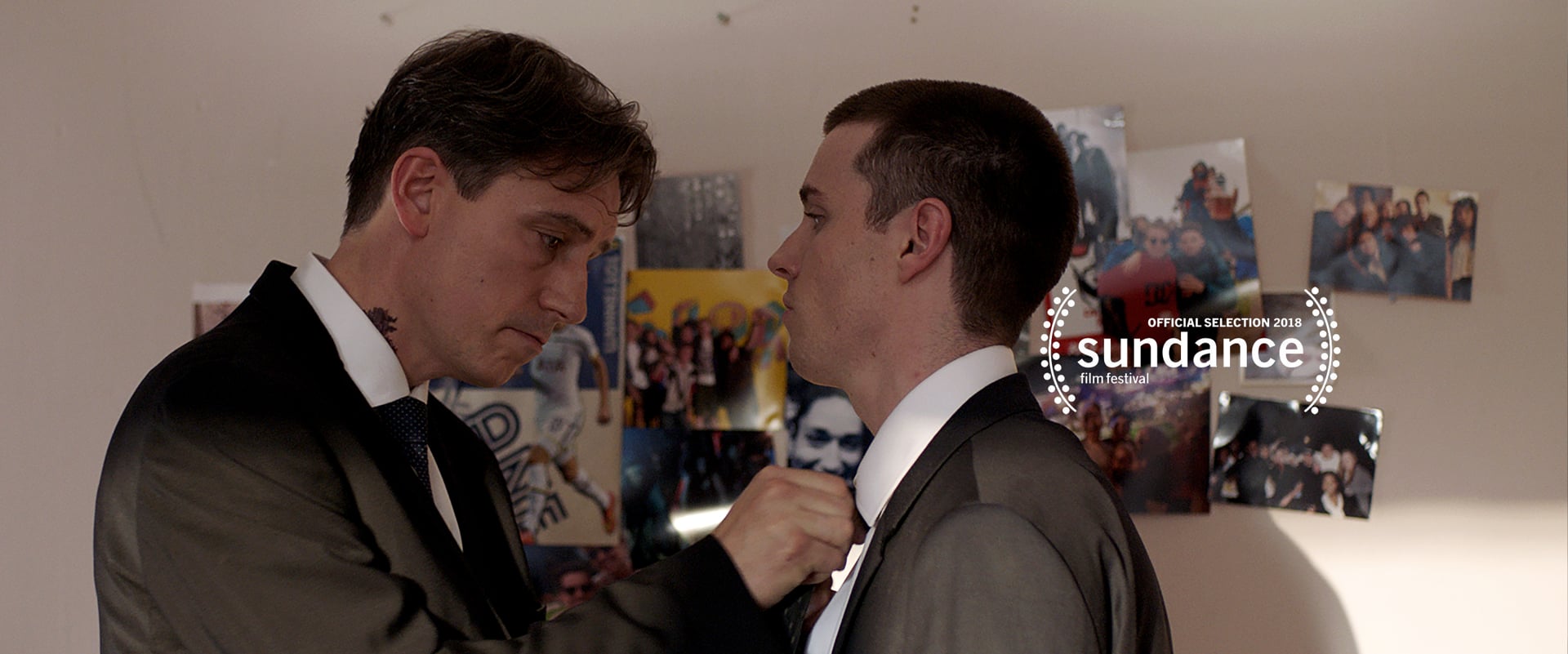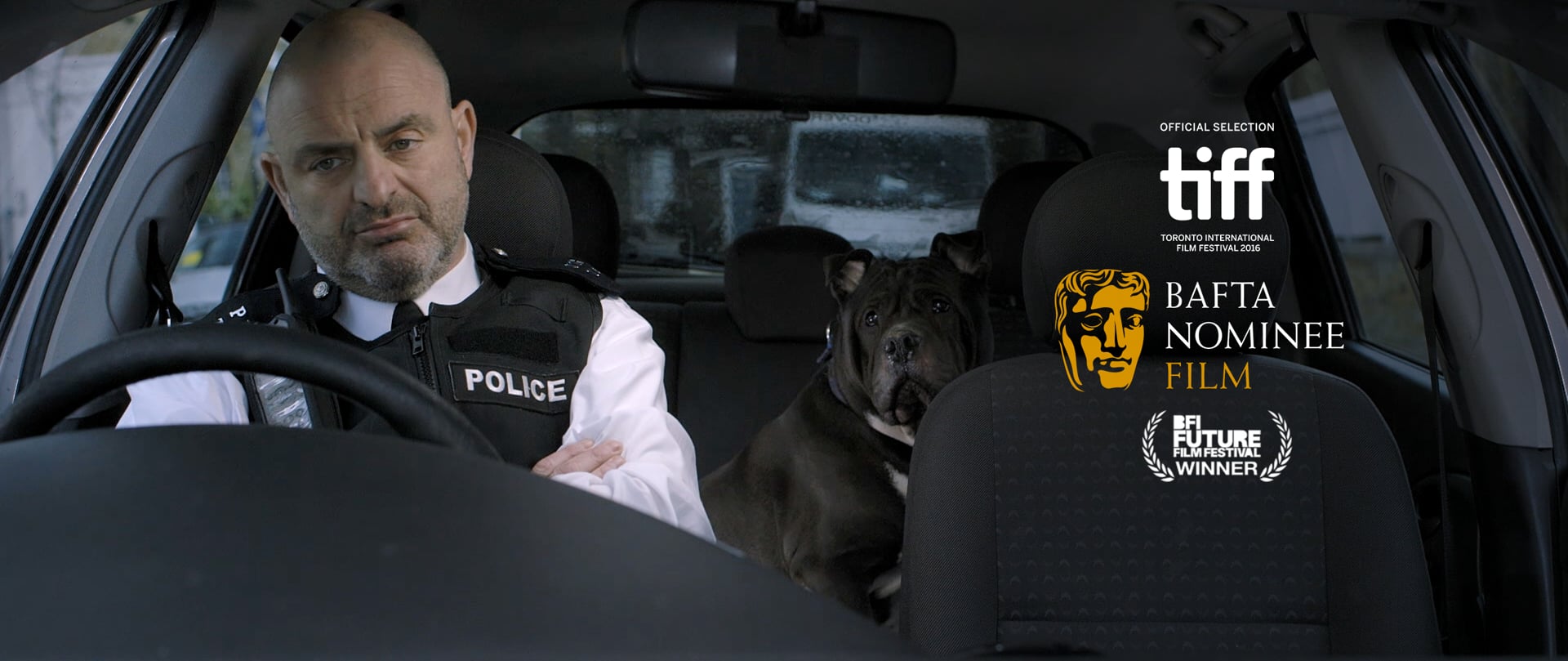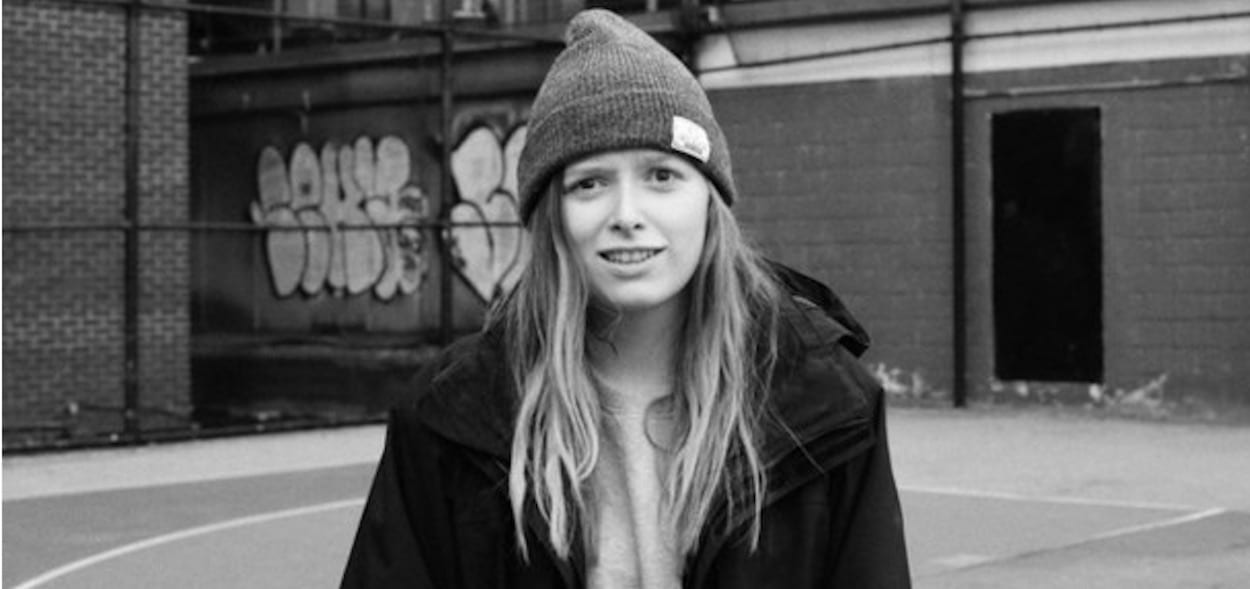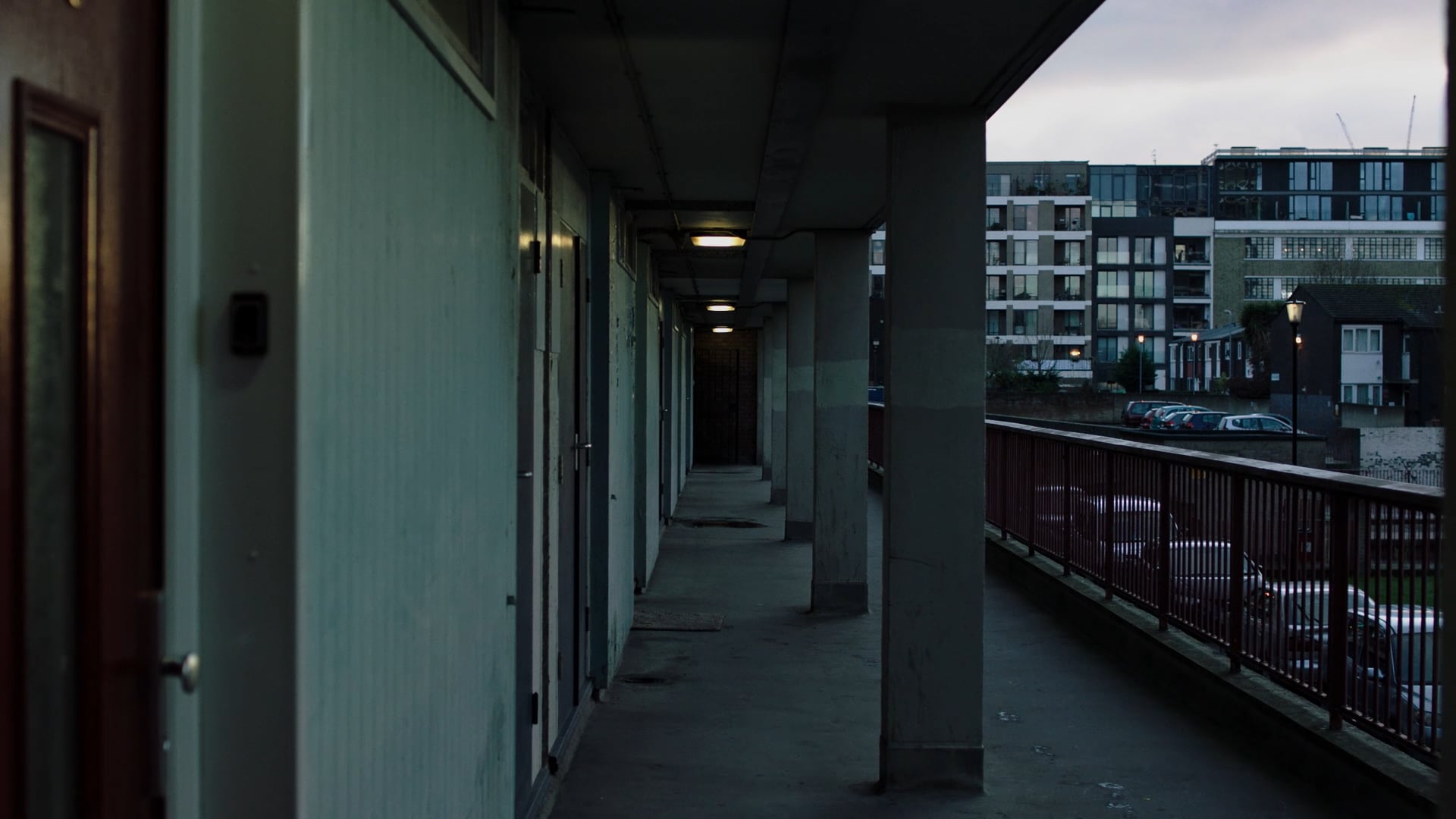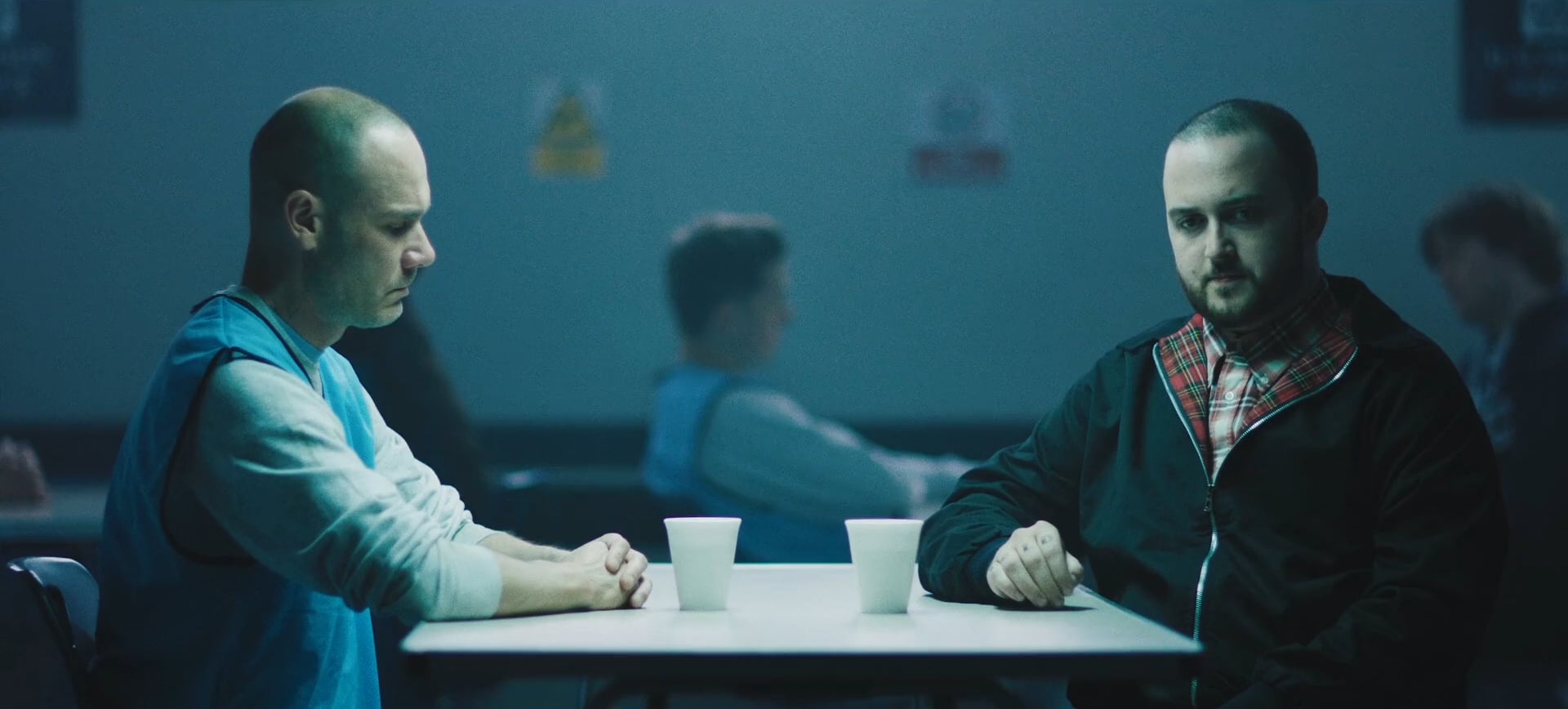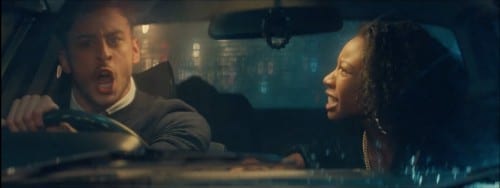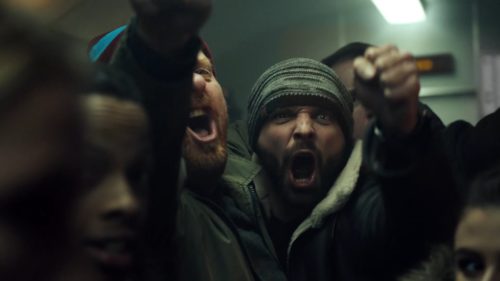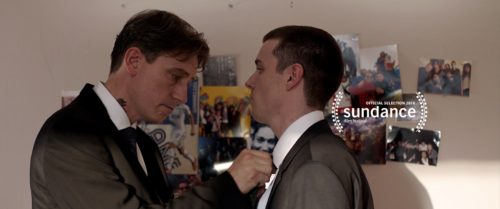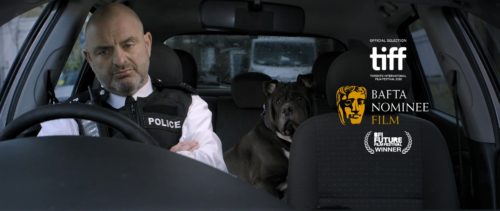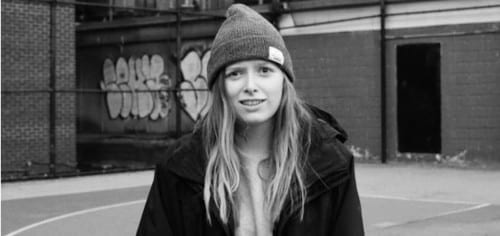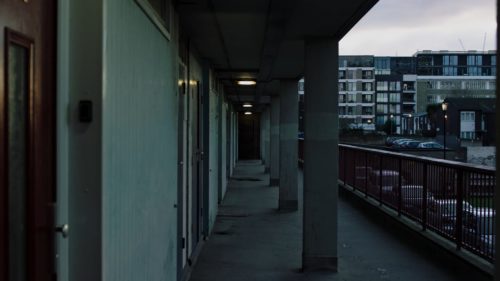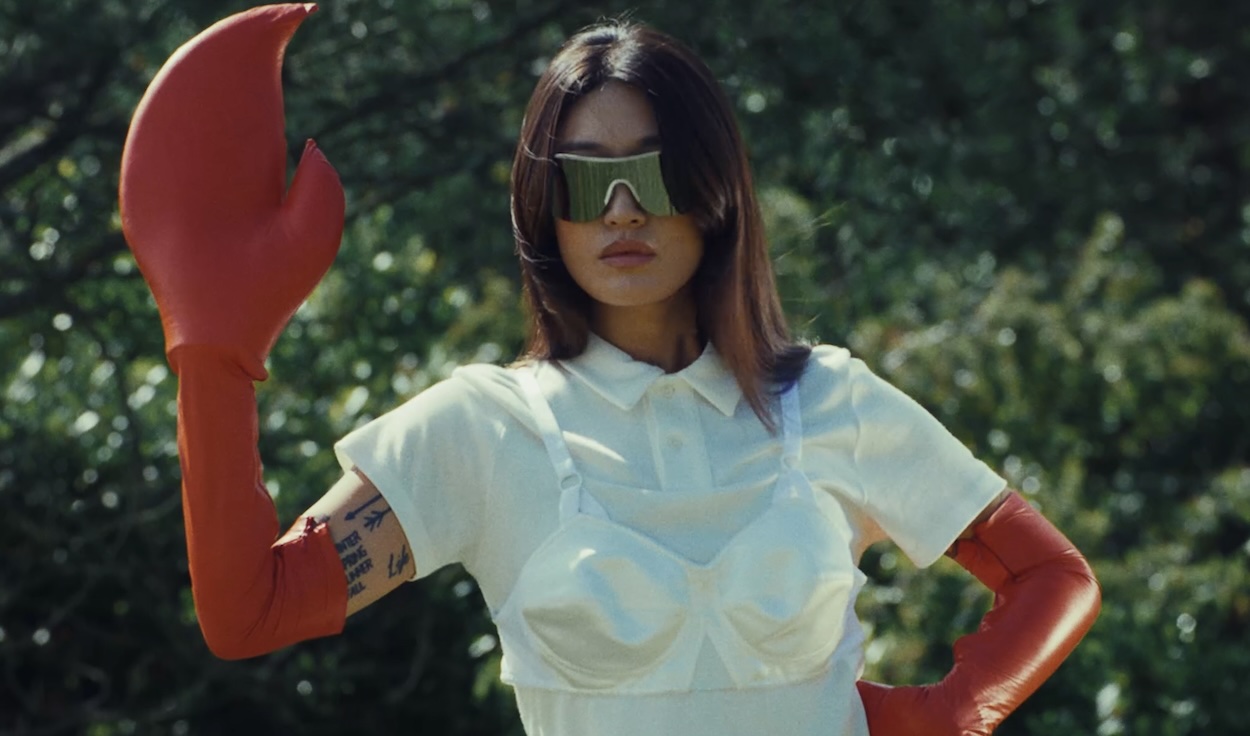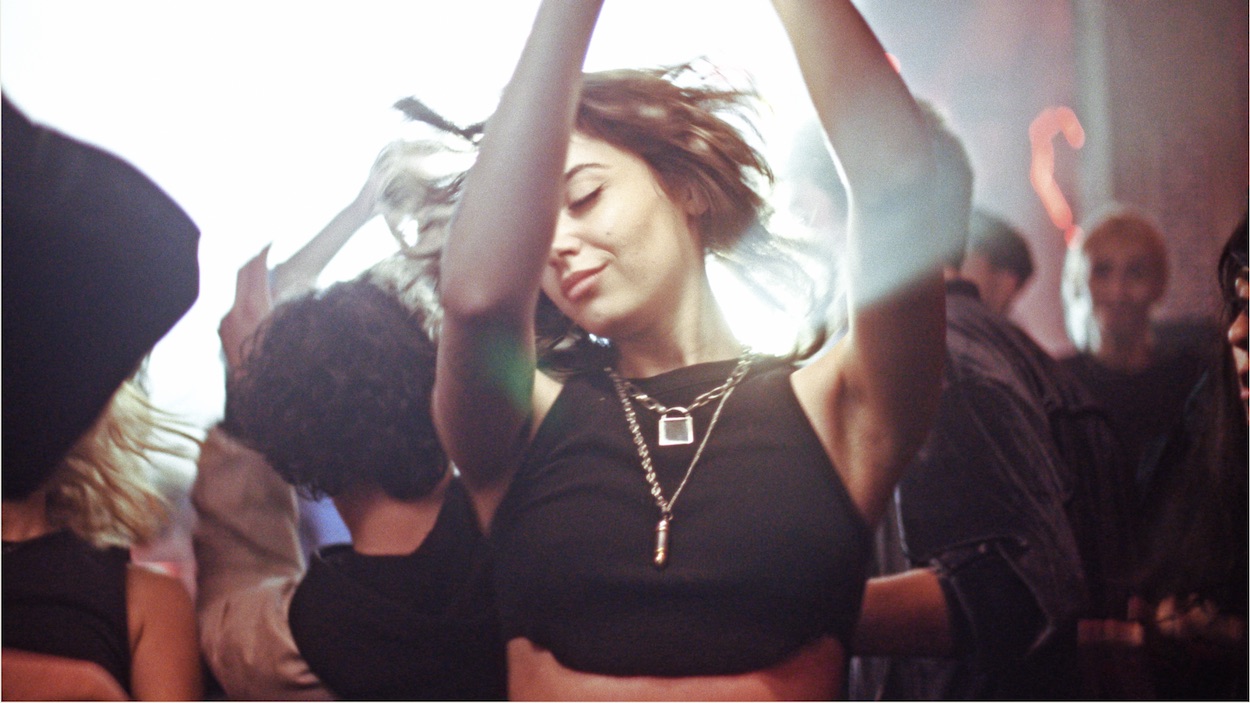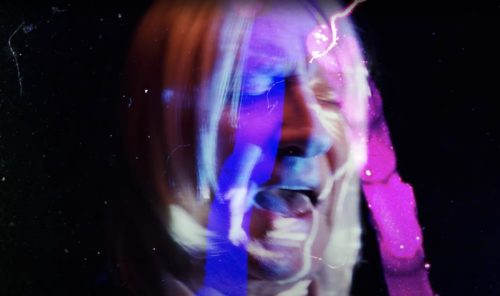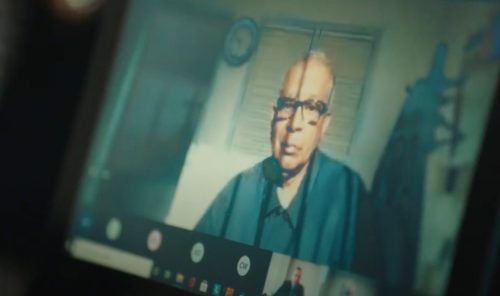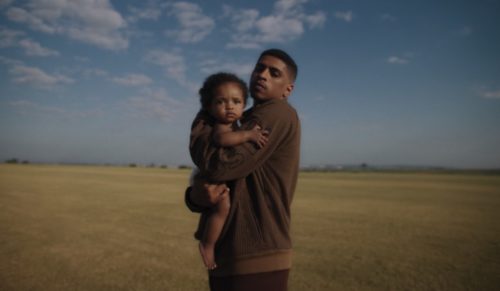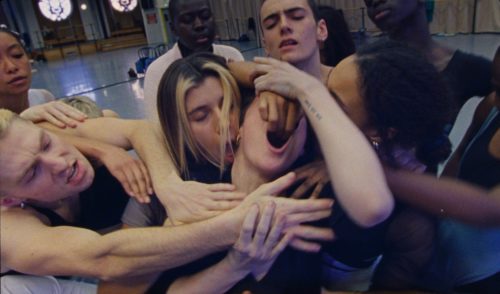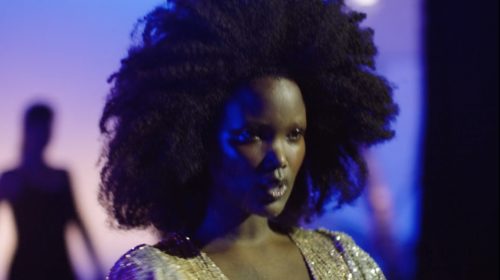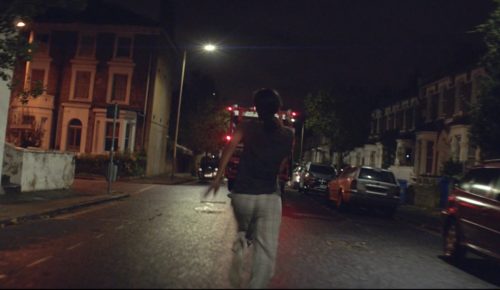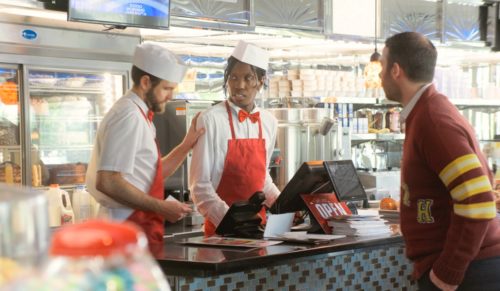Charlotte: I wasn’t one of these cool American kids who grew up watching loads of films and thinking I’m going to be in the film industry. I lived on a council estate in London and had lots of friends who were rappers, so they brought me in and I started shooting their videos, just for free, for fun. I did that until I was about 20, 21.
I’d duck out of school and I’d be filming these gangster rap videos all the time and self edit them, cause there was no budget. They’d just hand you £50 as a thank you, which was quite cool cause you could do four of them in a day, so you’d get £200 some days and for a 15 year old that was quite nice.
1.4: Why did they choose you to do the filming? Were you part of the music scene, or were you hanging out with them, did you all live quite close to each other?
Charlotte: We all lived quite near each other. A lot of them are my friends. I wasn’t cool enough to rap, I couldn’t rap at all. But I really wanted to be involved in some way, because it was at that time when grime and rap music in the UK was really going mad, everyone was getting into it. It was just something I wanted to be involved in, in some way. But I’m just not cool enough to rap unfortunately. So I went into the videos instead.
1.4: Did you teach yourself editing, in fact did you teach yourself everything?
Charlotte: Yeah, I started when I was about 14. I learnt how to use DSLR. The first few videos are rubbish, there’s no light balance, the ISO is changing… but I learnt how to edit with YouTube tutorials. Because I’ve done about 200 videos, over time you get better at them. So the first 150 are absolutely awful, but in each one you’ve learnt a new technique and you get a little bit better.
1.4: Did they have any narrative, or were they really just the guys rapping on the estate?
Charlotte: It’s all very visual, and it’s directing groups of 30 boys, with their hoods up, looking really intimidating holding a dog or something like that on a rooftop. It makes directing actors on set less intimidating after having to shout at a group of 30 teenage boys…
1.4: Would you post the videos up and it’d be their mates viewing them?
Charlotte: For sure, they would all promote it themselves. You’d get home, edit through the night, and at midnight you’d post it up. Some of them … some of the rappers went on to do really well. Some of them got half a million views and things like that. They’re just really basic, low budget videos. It was a time where everyone liked that kind of organic style. It looked authentic, cause you literally were just filming a boy and his friends on his council estate as opposed to having a budget and trying to create that look. It was natural, it was more like documentary film making I suppose in that aspect.
1.4: They all respected you obviously, and did what they were told?
Charlotte: No, not really. Hit and miss I suppose. It depended who it was but most of them, they knew it was helping their career to do a video. Once you’ve done a few, people start to appreciate your opinion, and then they let you input into the style, for sure.
1.4: So were you working the camera?
Charlotte: Yeah, yeah. Always working the camera.
1.4: How did commissions with the record labels come about?
Charlotte: If I’d known a rapper from when he or she wasn’t famous, and if they became quite well known and started getting little budgets like 10K, they’d want the person they’ve always known. They were quite loyal in that they’d say to the record label, “No, it has to be her to get in.”
1.4: What was the next step after grime videos? How did your ambition work? Could you see yourself becoming a filmmaker?
Charlotte: Yeah, really. I don’t have any family who are in the arts, or know anything about art. I wasn’t really sure how it would work, but because we were on quite a low income for our house, I could go to Uni. Not for free but I could get all the grants. I went to a film making course at Ravensbourne, where you got to learn lots of technical stuff, how to pull focus, and things like that, on the bigger cameras. And how to do narratives to an extent. At the end of that course I did my first short film, Standby, the one with the two police officers because I wanted to do a narrative.
1.4: Oh, you’re giving me the chills. Was that really your first short film?
Charlotte: Yeah, other than music videos. I suppose I’d got all the rubbish out in the music videos, so it doesn’t really count as a first one. First, narrative yeah.
1.4: What was the background story to Standby?
Charlotte: We had to make a final film and I only had £1,000s of my own savings. So I wanted to write something very contained. I liked reality shows, you know the really shit ones where police officers drive around and arrest people. I was just obsessed with them at the time. I wanted to write a narrative based on that. All the characters that get in the back, are just people I know. The grandma in the back is my Nan, who loves to steal, and carries a tin foil bag out every day. I work a lot on the weekends at a scrapyard, my cousin’s scrapyard. The Irish guy in the back who’s been stealing copper wire is based on a customer there. Because I didn’t really know how to write, I kind of had to write what I knew, I suppose. That was that.
1.4: The emotional development in all of your films is subtle, it hooks you in, there’s nothing overt. How do you write?
Charlotte: To be honest I don’t really spend a long time on it, I do the scripts in a day. I have an idea and then I’ll just sit there for four hours trying to get it out, and I’ll refine it from there.
1.4: Straight on to a computer?
Charlotte: No, in a notebook. A written notepad, though I usually do it on the bus or the train. When I’m travelling I just hate to not do anything, I get really bored on journeys …
1.4: Do you sketch camera moves…
Charlotte: No I can’t draw at all, I wish I could. Just stick men at the most.
1.4: Your other short film Fry-Up is heart breaking. Was that based on a personal story? You’re very good at capturing these intimate relationships..
Charlotte: I don’t feel that I am but thank you. I’ve had a lot of friends go in and out of prison, and my step dad as well. I’ve been in a lot of those moments, where you kind of sit there, not knowing what to say to someone. It was that kind of tense atmosphere I wanted to capture. It was all based on a morning a few months earlier, and I was just sitting there thinking “This would be a good story” while also worrying about whether my step dad was going to go to prison.
People, when I mention my family and friends have been in and out of prison, are often very judgemental. They’re quick to jump to judgement, and look down on that person. They don’t think of how the families have been affected. I’ve seen it destroying my friends’ mums when their son goes to prison. They know where he is, but when he comes out he’ll be a completely different person. It will have completely taken away any of his childlike qualities. I’ve seen my friends come back and how it’s destroyed their families. It takes them a long time to get back to knowing the person.
1.4: How was the transition from making your own short films, to directing the spot for The Autism Society and dealing with a client?
Charlotte: It was great because I did it with Ore and Knucklehead, who really help you with your first commercials. They really take you through the changes. I’ve done higher budget music videos, compared to my low budget ones, where you’d have lots of overseeing from the record label so I’ve had experience with it in music videos, but not so much with actual narrative.
It didn’t feel like a massive difference because it was still very personal and based on someone’s journey, which felt like the films I’ve made but on a bigger scale with more crew and an editor for once, cause I’d always had to cut my own, so that was great.
1.4: Did the editor have quite a bit of say? Did they give their first cut, or were you quite clear all the way through of what you wanted?
Charlotte: I sat in from the beginning for sure, but I suppose it was 50/50. A bit of both. It was Phil at Stitch, and hopefully I’ll use him for everything now cause we really get on. He’s from Newcastle, so we’re similar working class people. But, it was a bit of both. He’d have ideas, I’d tell ideas, like everything, the films are made by everyone on it – the sound person, the DOP, it’s not just me. I’m just lucky that Knucklehead give me such a great crew and resources for sure.
1.4: And now Wretch 32 is out..
Charlotte: Such a sad song isn’t it? It makes your heart break listening to it.
1.4: Did the story come to you after listening to the track, or did you play around with ideas?
Charlotte: It was a bit back-and-forth with the label and Wretch with this one. I really wanted to get amazing cast and let them run away with it and Wretch had a lot of ideas that influenced the video too so it was a collaboration between us all.
1.4: The lighting is superb, do you work with the same cinematographer?
Charlotte: I change depending on the project, so it’s always the same two people, Aaron (Green) and Frank (Dow), one of them does gritty stuff really well and the other does stylized. So Wretch 32 was Arran, who does the more stylized thing, whereas Frank is really intuitive with people’s emotions, you don’t even have to tell him where to go, and he knows what people are feeling with the camera, so it’s nice.
1.4: Where do you find inspiration for your characters?
Charlotte: The scrapyard, it’s amazing, there’s without a doubt a fist fight a day. It’s mostly Irish travellers who scrap, or homeless people who go around with a trolley and collect stuff, who are trying to work to make 20 to 30 pound a day. The travellers are incredible, because lots of them bring their kids as well, cause they’re home-schooled. The kids have incredible personalities and stories like all the customers. They’re always trying to steal from us, but if anything it makes you like them a bit more, that they’re so cheeky and so risky that they’ll do it right in front of your eyes. I enjoy it there for sure. I think I’ll always go. I don’t get paid, it’s more, it’s just if I’m bored it’s like the perfect place to go for inspiration and to meet down to earth normal people.
LINKS
Wretch 32, His & Hers (Perspectives)
Director Charlotte Regan
Producer Mickey Voak
Production Company - Knucklehead
Director of Photography - Arran Green
1st Assistant Director -Tom Wynbourne
Editor - Phill Currie @ Stitch
Grade - Dave 'Luddy' Ludlam @ The Mill
Label - Polydor
Commissioner - Ore Okonedo
Actors - Fady Elsayed Troika
Actors -Lauren Alexand
NAS, Diverted
Agency: Don’t Panic London
Managing Director: Joe Wade
Project Lead: Helen Jackson & Thyme Mor
Lead Creative: George McCallum
Creative: Claire Guiller, Jake Moss, Richard Beer, Tom Reas, Tom Loader
Strategy: Ellie Moore
Production Company: Knucklehead
Director: Charlotte Regan
Producer: Ore Okonedo
Production Assistant: Jordan Maxwell
1st AD: Nathan Horrocks
2nd AD: Charlie Killick
DOP: Franklin Dow
Focus Puller: Naomi Hancock
DIT: Juan Minotta
Gaffer: Joel Rainsley
Sound: Michael Ling
Art Director: Jason Synnott
Hair & Makeup: Grace Ellington
Stylist: Josh Meredith
Runners: Daniel Stoker, Dan Hasson, Charlotte Gardiner, Laurent Durham
Edit Company: Stitch
Editor: Phil Currie
Grade Company: The Mill
Sound Company: Wave
Photographer: Lewis Khan
Talent: Saskia Lupin
Fry-Up short film
Director / Writer - Charlotte Regan
Producer - Jack Hannon
Production Companies - xFilm and Catsnake
Executive Producers - Stephen Follows, Paul Harry Thomas, Edward Dark
Directory of Photography - Arran Green
Composer - Patrick Jonsson
Production Designer - Jason Synnott
Sound Designer - Michael Ling
Gaffer - Chris Broomfield
Spark - Milo Cosemans
1st AC - Ali Baines
2nd AC - Emmet Holmes-Boyes
1st AD - Nathan Horrocks
Casting Director - Emily Brockman
Colourist - Joseph Bicknell at CHEAT
Assistant Editor - Fiona Sanchez
Hair & Make-Up - Rose Redrup
Costume - Hannah Davis
BTS - Saoud Khalaf
Runner - Matthew Kay
Stand-By
Written and directed by Charlotte Regan
Final year Ravensbourne
